YouTube Analytics
Introduction
The Connector for YouTube Analytics provides easy access to YouTube Analytics data, including Traffic, Sources, Demographics, Subscribers, and more.

Connection String
YouTube Analytics uses the OAuth authentication standard. You can use the OAuth credentials embedded in the provider or you can register an application with Google to obtain your own. In addition to the Connection String Parameters, Specify the Callback URL for this Connector. Set the OAuth Properties (OAuth Client ID and OAuth Client Secret) ,Developer Token and ClientCustomerId. Set the CallBack URL also for this Connector. Once the Callback URL is set the OAuthAccessToken will be generated in the Connection string when you verify the Connection using the VERIFY CONNECTION option.
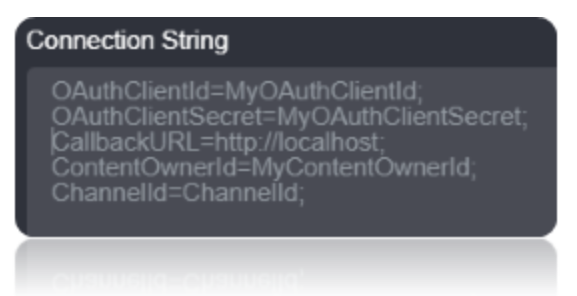


Connection String Parameters
| Parameter | Description |
|---|---|
| OAuthClientId | Set this to the client Id in your app settings. |
| OAuthClientSecret | Set this to the client secret in your app settings. |
| CallbackURL | Set this to the URL that YouTube Analytics redirects to during the authentication process. |
| ChannelId | Set this to the Id of a YouTube channel. If not specified, data is returned for the authenticated user’s channel. |
| ContentOwnerId | Set this if you want to generate content owner reports. |
Connecting to YouTube Analytics Connector
YouTube analytics API uses the OAuth authentication standard.
Log in to https://console.developers.google.com to begin the process of finding your oauth token.
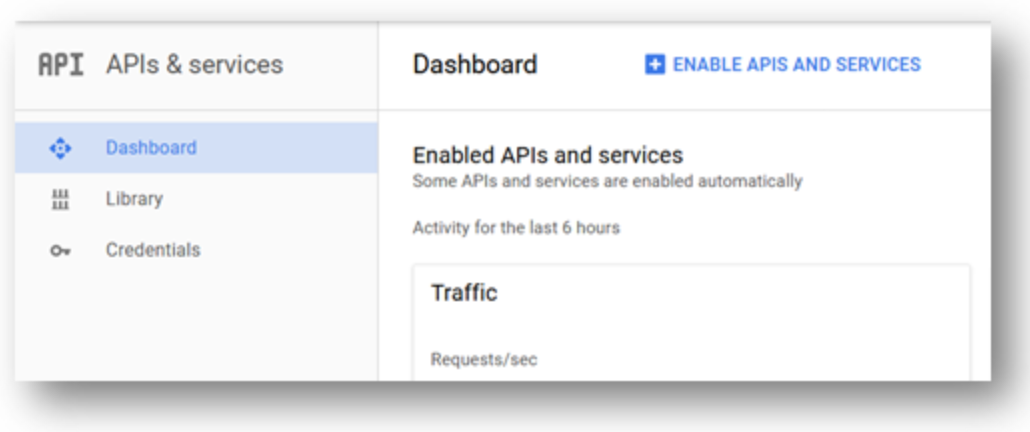
Navigate to the library tab and select the ‘YouTube Analytics API’ option.
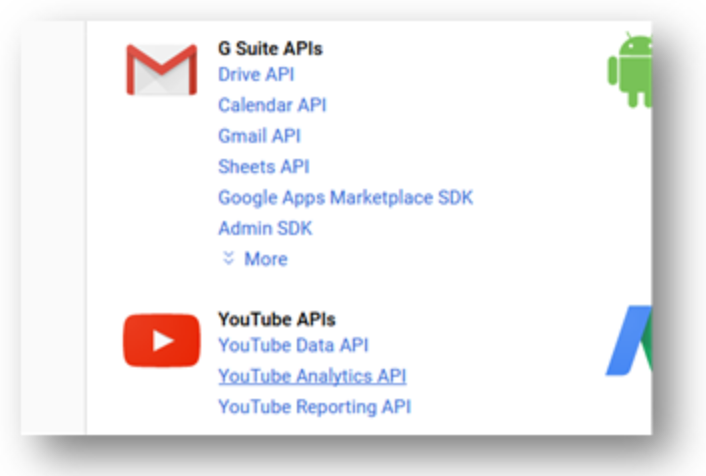
In the top middle of the resulting dashboard, select ‘Enable’.
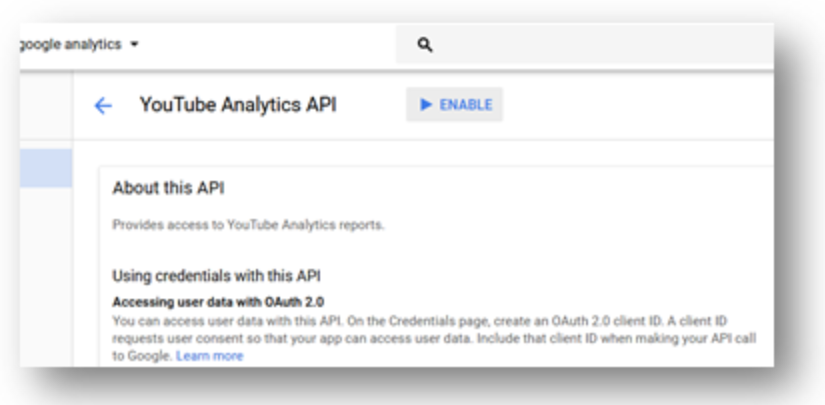
Now navigate to the credentials tab and select drop down ‘Create Credentials’ in order to select ‘OAuth Client ID’.
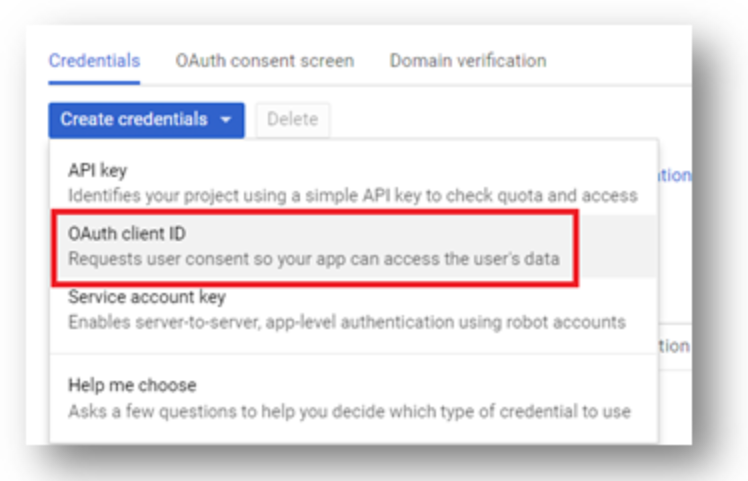
In the resulting form, select the ‘Web application’ form, and a meaningful name for your client ID. The ‘Authorized redirect URI’ is important for Loome Integrate’s implementation. Go to the Loome Integrate tab in your browser, where you are attaching this new connector, and copy this ‘Call Back URI’ text appearing below the connection string form.
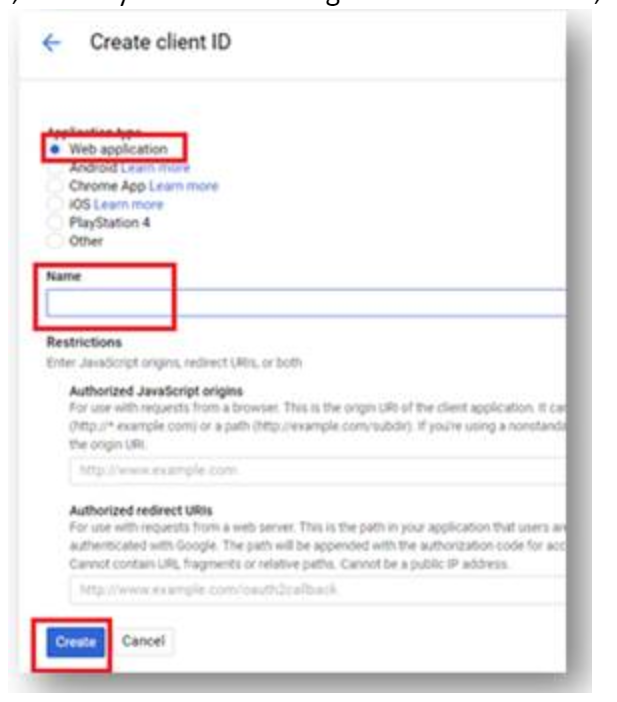
Click Submit and then copy the ‘Client ID’ string given to your connection string’s ‘OAuth Client Id’ and perform likewise with the ‘OAuth Client Secret’ value.
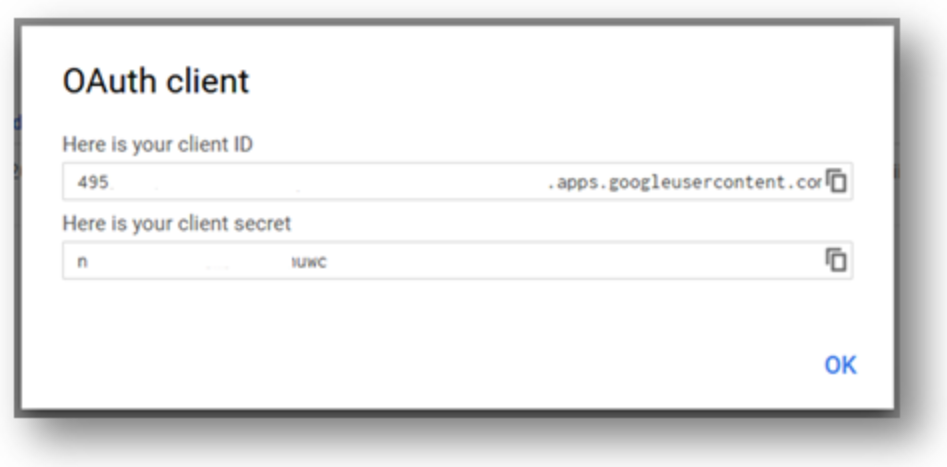
Open a new tab and navigate to https://www.youtube.com and navigate to youtube settings, found at the top right of the page.
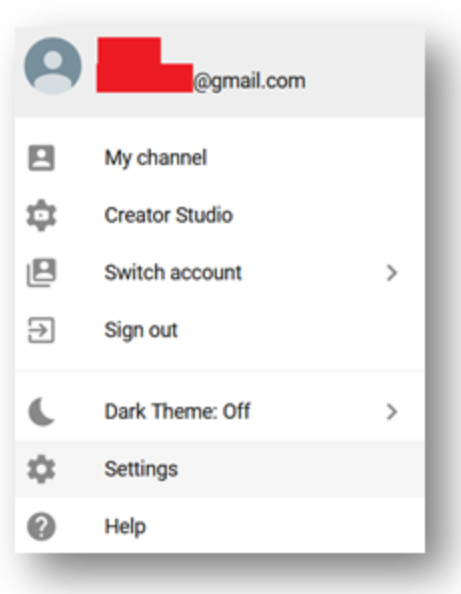
Click ‘ Advanced’ . You should see a value for ‘Youtube Channel Id’. Copy it and then place it in your Loome Integrate connection string as the ‘Channel Id’ parameter.
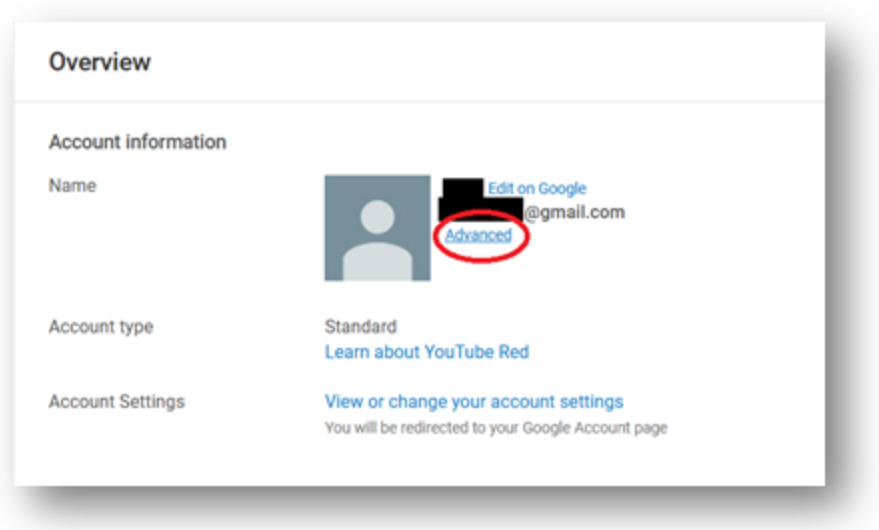
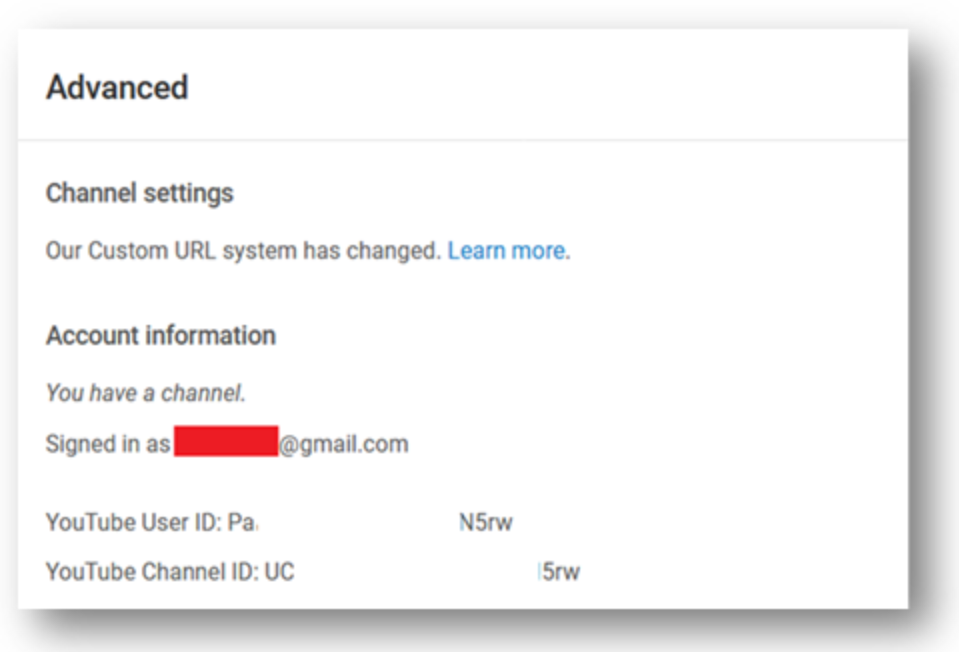
If you are intending to generate content owner reports, Follow the tutorial at this link in order to obtain the value for the ‘Content Owner Id’ parameter. https://support.google.com/youtube/answer/6301188?hl=en
Data Migrations
To Check for the data migrations:
Add a new connection in Loome Integrate as shown.
- Go to tasks and click on Connections.
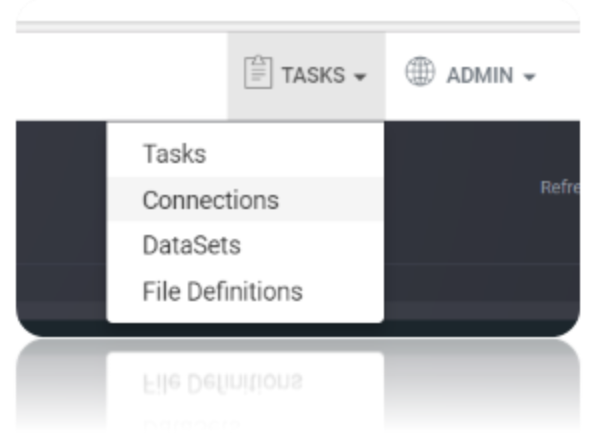
- Add a new connection Using Add New Connection Option.

- Choose YoutubeAnalytics Connector from the available Connector Options.

Using the connection string parameters created ,Verify the connection using the VERIFY CONNECTION Option in Loome Integrate.
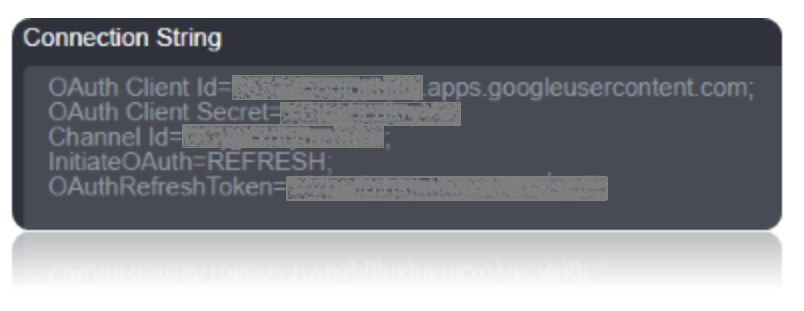

After Clicking Verify Connection the OAuth Tokens are generated in the Connection String, You will be taken to the following Window. Choose the account, and give access by clicking on allow. You will be displayed with authorization successful window.

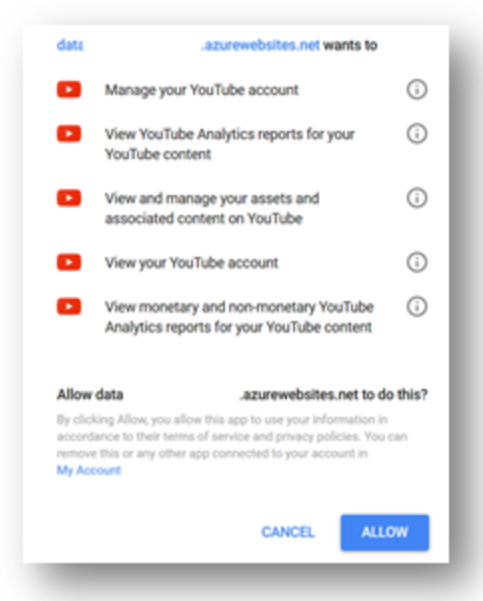
Once the Connection is verified, Insert the Connection Using Insert Option.

Create a Job Using ADD A JOB option in Loome Integrate, add a data migration task to the job.

Create a New Task by right clicking job list and then Add a New Task Option. If you want to edit an Existing Task Use Edit Task.

Choose a Data Migration Task.
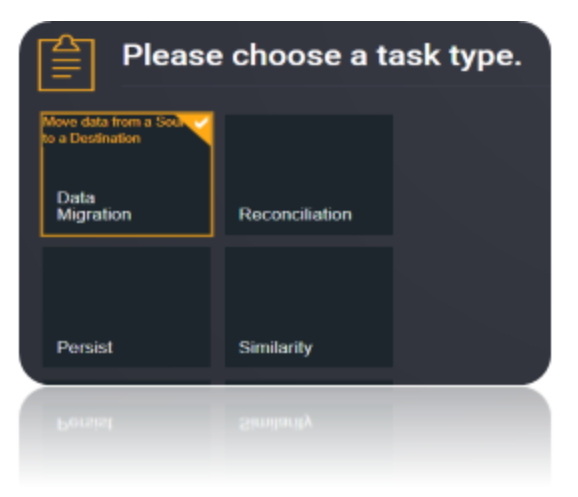
Choose the source and the destination for the migration of data. Name the Task.
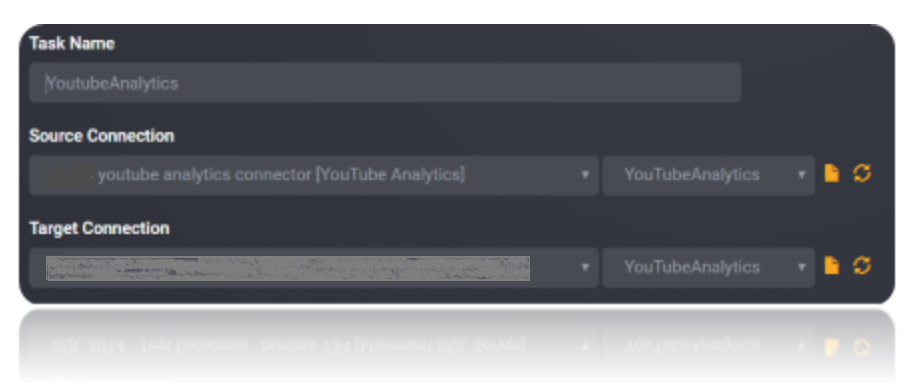
Choose the Tables or the data that need to be migrated from the source to the destination. You can Copy all Tables by checking Copy all tables box.

Execute the Job. Check for results and the details of the data migrated in Execution History.
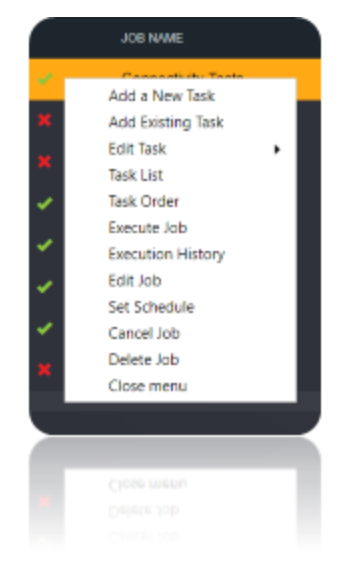
Data model
The Connector for YouTube Analytics models YouTube Analytics entities in relational Tables, Views, and Stored Procedures. YouTube Analytics allows for Dimensions and Metrics to be queried in a large number of arrangements. Some sample views are provided based on common YouTube Analytics reports. You can however also create your own custom views based on any combination of Dimensions and Metrics you need.
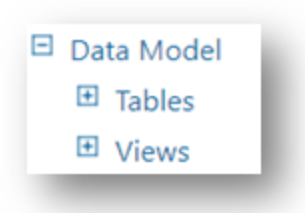
Tables
Tables refer to the available tables.
| Name | Description |
|---|---|
GroupItems |
Create, delete, and query Items that compose a Group. |
Groups |
Create, update, delete, and query YouTube Analytics Groups. |
Views
Views are similar to tables in the way that data is represented; however, views do not support updates.
| Name | Description |
|---|---|
AdPerformanceReports |
Query Ad Performance Reports. Ad Performance Reports provide impression-based metrics for ads that ran during video playbacks. These metrics account for each ad impression, and each video playback can yield multiple impressions. |
Demographics |
Query YouTubeAnalytics Demographics grouped by age groups and gender. |
Devices |
Query YouTubeAnalytics Devices or Operating System statistics. This table allows you to aggregate viewing statistics based on the manner in which viewers reached your video content. For example, you can identify the number of views that occurred on mobile devices or game consoles. |
EngagementReports |
Query Engagement Reports info. For example, how many times a user shared a video. |
TimeBasedReports |
Query time-based info on views, subscribers, etc. For example, how many new subscribers were gained at a specific time. |
TopVideos |
Query the TopVideos for a channel or the TopPlaylists if you are a content owner. You can also use this view to query playback detail and geographic filters. |
TrafficSources |
Query TrafficSources. Statistics are based on the manner in which viewers reached your video and playlist content. |